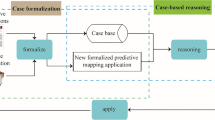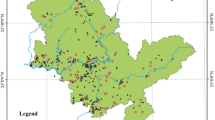Abstract
Currently environmental distribution maps, such as for soil fertility, rainfall and foliage, are widely used in the natural resource management and policy making. One typical example is to predict the grazing capacity in particular geographical regions. This paper uses a discovering approach to choose a prediction model for real-world environmental data. The approach consists of two steps: (1) model selection which determines the type of prediction model, such as linear or non-linear; (2) model optimisation which aims at using less environmental data for prediction but without any loss on accuracy. The latter step is achieved by automatically selecting non-redundant features without using specific models. Various experimental results on real-world data illustrate that using specific linear model can work pretty well and fewer environment distribution maps can quickly make better/comparable prediction with the benefit of lower cost of data collection and computation.
Preview
Unable to display preview. Download preview PDF.
Similar content being viewed by others
References
Hill, M.: The global land project: An international context for australian analysis of human transformation of ecosystems and landscapes. In: Australian Bureau of Rural Sciences Seminar Series Presents (2005) (accessed on Jan 30, 2007), http://www.affashop.gov.au/PdfFiles/brs_seminar_25nov05.pdf .
Priya, S., Shibasaki, R., Ochi, S.: Soil erosion and crop production: A modeling approach. In: Proceedings of Global Environmental Symposium organized by Japanese Society of Civil Engineers, pp. 175–180 (1998)
Horssen, P., Schot, P., Barendregt, A.: A gis-based plant prediction model for wetland ecosystems. Landscape Ecology 14, 253–265 (1999)
Hill, M., Lesslie, R., Barry, A., Barry, S.: A simple, portable, spatial multi–criteria analysis shell–MCAS–S. In: International Symposium on Modelling and Simulation, University of Melbourne (2005)
Chatterjee, S., Hadi, A., Price, B.: Simple linear regression. In: Regression Analysis by Example, 3rd edn., pp. 21–50. Wiley, New York (2000)
Vapnik, V., Lerner, A.: Pattern recognition using generalized portrait method. Automation and Remote Control. 24, 774–780 (1963)
Vapnik, V., Golowich, S., Smola, A.: Support vector method for function approximation, regression estimation and signal processing. Advances in Neural Information Processing Systems. 9, 281–287 (1997)
Cristinaini, N., Shawe-Taylor, J.: An introduction to support vector machines and other kernel–based learning methods. Cambridge University Press, Cambridge (2000)
McCollum, P.: An introduction to back-propagation neural networks. encoder. The Newsletter of Seattle Robotics Society (1997)
Yu, L., Liu, H.: Redundancy based feature selection for microarray data. In: KDD, pp. 737–742 (2004)
He, H., Jin, H., Chen, J.: Automatic feature selection for classification of health data. In: Australian Conference on Artificial Intelligence, pp. 910–913 (2005)
Author information
Authors and Affiliations
Editor information
Rights and permissions
Copyright information
© 2007 Springer-Verlag Berlin Heidelberg
About this paper
Cite this paper
Zhang, K. et al. (2007). Discovering Prediction Model for Environmental Distribution Maps. In: Washio, T., et al. Emerging Technologies in Knowledge Discovery and Data Mining. PAKDD 2007. Lecture Notes in Computer Science(), vol 4819. Springer, Berlin, Heidelberg. https://doi.org/10.1007/978-3-540-77018-3_11
Download citation
DOI: https://doi.org/10.1007/978-3-540-77018-3_11
Publisher Name: Springer, Berlin, Heidelberg
Print ISBN: 978-3-540-77016-9
Online ISBN: 978-3-540-77018-3
eBook Packages: Computer ScienceComputer Science (R0)




